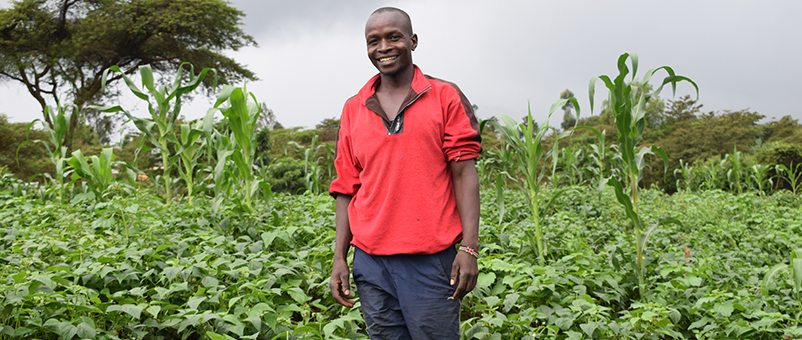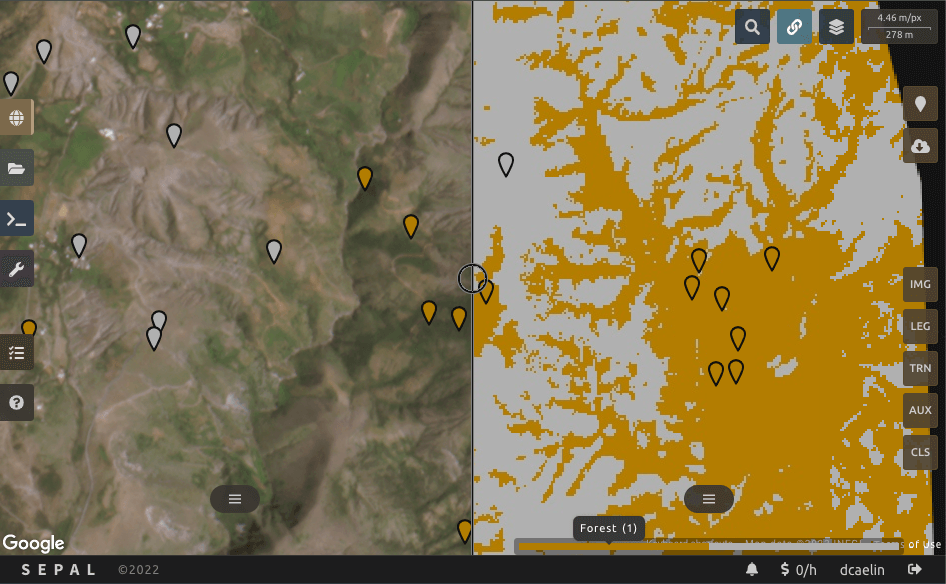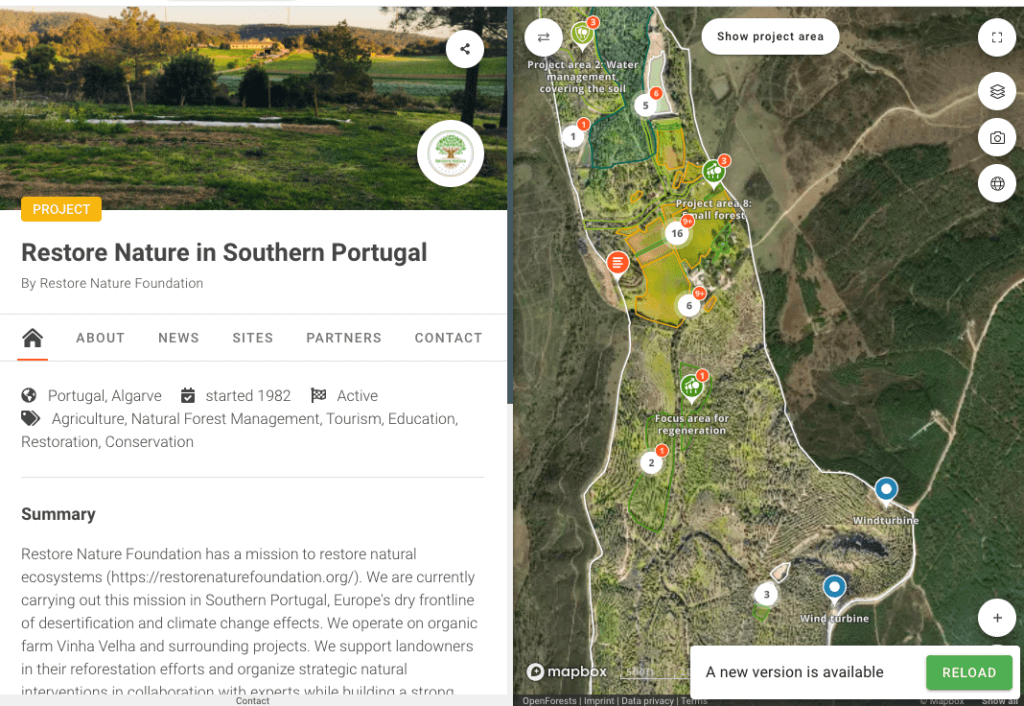Money doesn’t grow on trees, but the inverse is often true; growing trees requires money. While recognizing that money cannot solely drive the process, renewing ecosystems and transitioning to sustainable production models often demands investment. The problem landscapes face is that funding is hard to come by; investors and donors increasingly want to see meaningful ecological, social, and economic returns on their investment.
We and our partners at 1000 Landscapes for 1 Billion People are actively working to bridge that gap. Here at Tech Matters, we focus on the technological component of the puzzle: What role does tech play in landscape finance?
There are many ways that landscapes—the interconnected mosaic of natural and human-built ecosystems and the people who live there—obtain funding. We highlight two categories where there is a prominent role for tech: supporting the building of exciting, investable projects for donors and investors and enhancing the work of community leaders.
Building Investable Projects
The green finance movement has grown steadily over the past decade, with $35 trillion invested in 2020 through approaches investment that consider environmental, social and governance factors. Investors are beginning to recognize that investing in healthy, sustainable ecosystems is not just essential to a sustainable biosphere (which is reason enough in its own right); it’s also good business.
Regenerative agriculture enhances and sequesters carbon in the soil, eschews tillage and harmful pesticides and fertilizers, and is more profitable than conventional farming. Sustainably generated lumber creates more jobs and produces lumber more profitably. Healthy water ecosystems generate ecotourism and sustainable fishing profits three times greater than the cost of adopting the requisite conservation measures. The opportunity for landscape leaders to use funds for sustainable practices to deliver economic value to investors is stunning.

Why, then, do we constantly hear stories about struggling to access finance when we speak with landscape leaders?
One part of the problem is that investors can’t find enough investable projects in landscapes. According to a recent 1000 Landscapes report:
“Investors report a lack of investable projects in critically important emerging sustainable/regenerative landscape asset classes, which include tangible forestry, agriculture, grasslands, and other land- and marine-based assets along with associated real estate, energy, water, utility, and infrastructure assets. Project sponsors are often disconnected from investors and are more focused on ecological and social outcomes than the business fundamentals that can enable them. As a result, regenerative landscape projects are perceived as high risk, hard to access, one-off innovations rather than low-risk, well-understood projects backed by real assets.” (emphasis added.)
To create investment-ready landscape projects, landscape leaders need to speak in concrete terms about the impacts of their projects from an ecological, social, and economic perspective.
Here’s where technology can help. Many landscape leaders are unaware of how their projects can deliver multiple types of returns.
Technology can help them:
- Discover the potential financial benefits of their ecological work through webinars, a library of case studies, and other inspirational content.
- Build a portfolio of interventions through situation-appropriate templates and access to technical expertise. Sometimes people are unaware of which interventions will deliver economic, social, and environmental returns. Or, if they are aware, sometimes they don’t know how to translate those interventions into successful business plans.
- Model and demonstrate the impact of their work, a sort of Sim City experience for the real world. Landscape leaders are often unable to concretely predict the outcomes of their interventions. The projects resulting from such an approach are often more investable than traditional conservation efforts.
We think technology can play a meaningful role in a variety of landscape finance processes:
- Organizations focused on landscape investment have developed investment blueprints and evaluative frameworks that outline the economic benefits of ecosystems and biodiversity. How might technology be used to help people further interact with and understand these frameworks?
- Our colleagues at EcoAgriculture Partners created exercises and research processes for landscape leaders to generate fundable landscape projects. How might the techniques designed for a workshop be automated (or as we like to call it, semi-automated to highlight that humans are always part of these processes) to expand the potential audience and lower the barriers to access?
- Some technology creators have developed tools for modeling the outcomes of action into measurable returns. How might these tools be further simplified and made usable to a global audience of landscape leaders?
We see technology as a force multiplier for the teams of people hammering away at the problem of landscape finance.
Enhancing Landscape Leadership
Investors and donors build trust on the belief that people executing a project will deliver what they promise. For this to happen, landscape leaders need to be effective in doing what they do, whether it be rewilding a conservation area or delivering a high-value asset like an ecotourism destination (or, as discussed above, both). Technology can help landscape leaders across the range of their work activities by saving money and time, improving efficiency, and extending impact.
Technology can streamline slow and resource-intensive processes. In a recent blog post, we shared how we helped a nonprofit detect deforestation in its landscape using the cloud-based mapping analysis tool Sepal to eliminate days of waiting. Not only did that team save on labor, but leveraging cloud computing freed them up for other critical tasks. Every minute of efficiency gained through technology delivers greater returns on investment.

Technology is also a game-changer for another requirement for organizations to become more fundable: effective data gathering, especially for monitoring and evaluation. Local leaders are often quite aware that third parties have tremendous amounts of data about their landscape, but that they generally lack access to this data, even though they are the people making the important decisions about their landscape as the people who live there. We’ve heard this phenomena described as data colonialism, and believe it is critical to increase the accessibility of data about a place to the leaders of that place.
Other potentially accessible data surrounds landscape leaders but, as we have learned in our interviews with them, this data can remain stuck for months in error-prone and inefficient paper-based processes. Data trapped within those archaic methods is difficult to share (even within organizations) and challenging to apply to decision-making.
Thoughtfully designed technology, on the other hand, can make data easier to collect and more functional. Collection tools like Mapeo, which its creators co-designed with indigenous groups that are actively maintaining landscapes, serve the particular needs of their community by being mobile-friendly, offline-compatible, and available in local languages. SurveyStack, an information collection tool designed by OurSci, aids community learning and data sharing.
Once data is collected in a way that is useful, mapping tools can represent that information in a way that allows decision-makers to plan investments in their landscape. Looking at a map of the landscape landscape leaders to see where certain interventions/investments need to happen if they are going to achieve ecological, social, economic landscape scale benefits. Having this landscape scale perspective to investment can have concrete financial benefits for investors as well because an integrated set of interventions can reduce risk. For example, coordinated investment in watershed protection reduce the risk of water drying up which would be bad if your business relied on water.

Effective data collection practices not only allow organizations to collect and share information easily – perhaps enabling premium commodity prices by documenting certification data and making markets more transparent– but also improve reporting, which can strengthen an organization’s case for additional funding.
The list of benefits for an organization running appropriately chosen digital tools goes on. Tech can help make landscape partnerships more fundable by building the capacity of its members. It can raise an organization’s funding profile by providing it with practical communication tools to share its vision and tout its successes. It can facilitate better communication and collaboration between landscape members, helping them support one another in their efforts. Effective landscape leaders are fundable landscape leaders, and technology is an essential tool in pursuing this goal.
What this Means for Terraso
Tech Matters is building Terraso to support the vision of ecologically and economically sustainable landscapes. This is a burgeoning field, and we’ve touched on only a tiny part of how we think developers can mobilize technology in support of it. As we continue to design Terraso, we are considering each feature by how it will help organizations be more effective and generate investable projects. Money doesn’t grow on trees, but with the support of some good tools, those who plant trees and restore ecosystems will have the resources they need to create a greener, healthier planet.

